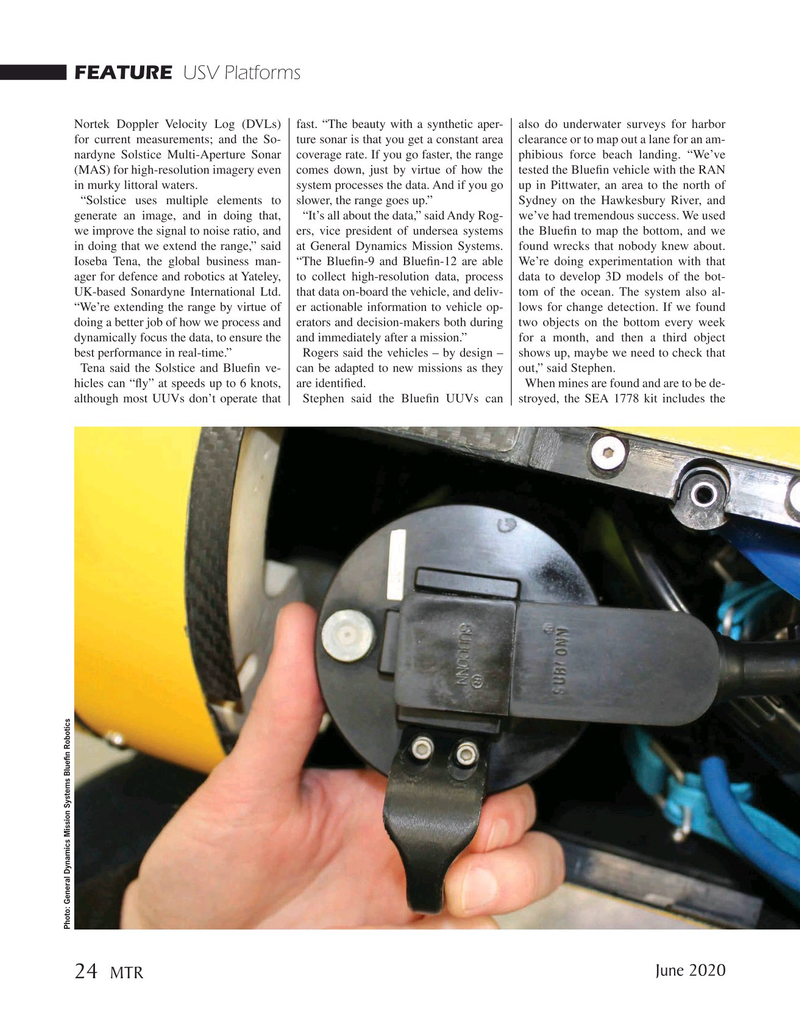
Page 24: of Marine Technology Magazine (June 2020)
Read this page in Pdf, Flash or Html5 edition of June 2020 Marine Technology Magazine
FEATURE USV Platforms
Nortek Doppler Velocity Log (DVLs) fast. “The beauty with a synthetic aper- also do underwater surveys for harbor for current measurements; and the So- ture sonar is that you get a constant area clearance or to map out a lane for an am- nardyne Solstice Multi-Aperture Sonar coverage rate. If you go faster, the range phibious force beach landing. “We’ve (MAS) for high-resolution imagery even comes down, just by virtue of how the tested the Bluefn vehicle with the RAN in murky littoral waters. system processes the data. And if you go up in Pittwater, an area to the north of “Solstice uses multiple elements to slower, the range goes up.” Sydney on the Hawkesbury River, and generate an image, and in doing that, “It’s all about the data,” said Andy Rog- we’ve had tremendous success. We used we improve the signal to noise ratio, and ers, vice president of undersea systems the Bluefn to map the bottom, and we in doing that we extend the range,” said at General Dynamics Mission Systems. found wrecks that nobody knew about.
Ioseba Tena, the global business man- “The Bluefn-9 and Bluefn-12 are able We’re doing experimentation with that ager for defence and robotics at Yateley, to collect high-resolution data, process data to develop 3D models of the bot-
UK-based Sonardyne International Ltd. that data on-board the vehicle, and deliv- tom of the ocean. The system also al- “We’re extending the range by virtue of er actionable information to vehicle op- lows for change detection. If we found doing a better job of how we process and erators and decision-makers both during two objects on the bottom every week dynamically focus the data, to ensure the and immediately after a mission.” for a month, and then a third object best performance in real-time.” Rogers said the vehicles – by design – shows up, maybe we need to check that
Tena said the Solstice and Bluefn ve- can be adapted to new missions as they out,” said Stephen.
hicles can “fy” at speeds up to 6 knots, are identifed. When mines are found and are to be de- although most UUVs don’t operate that Stephen said the Bluefn UUVs can stroyed, the SEA 1778 kit includes the
Photo: General Dynamics Mission Systems Bluefn Robotics June 2020 24
MTR

 23
23

 25
25
